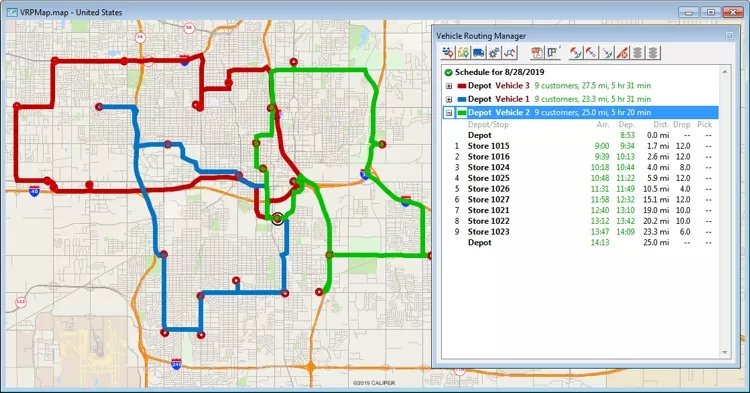

- #Caliper transcad manuals
- #Caliper transcad update
- #Caliper transcad software
- #Caliper transcad professional
- #Caliper transcad download
Then I discover that the stop layer can't be opened with exclusive access so that the attributes can be changed. The bitch of it was when I saved the edits, I hadn't deleted the stop on the second pass which, for some reason, changed the pass count field in the stop layer to zero and created the evil. I was finally able to get most of the route altered by realigning nearly half of it. While adding an entirely new route and deleting an entire existing route went off without a hitch I ran into a shit ton of errors when I tried to extend a portion of a route from a stop in the middle of the route along a perpendicular road and back. The transit route system updates were not nearly as enjoyable! I'm using TransCAD version 5.0 which I've found, in general, to be easier to work with route systems but I ran into some frustrating situations today. The road network edits were simple and straightforward, in fact, they didn't even involve any geography editing, just updating some attributes.
#Caliper transcad software
#Caliper transcad update
Please note that even though I will post more videos on Youtube, I will not update this file for download, so the safest place to find the most up-to-date videos will always be my channel on Youtube.Ī friend asked me what do I gain from creating and posting these videos, and the answer to that question is very simple:
#Caliper transcad download
The videos can be found in the format of a playlist on Youtube, but you can also download most of the video files from HERE (675Mb). Especially software like Citilabs Cube, which has a much more difficult learning curve, would give a much better impression to their new users. Seeing how well the videos were received, I believe that the software houses could invest some time in creating their own video tutorials or giving incentives for users to do so.
#Caliper transcad manuals
The manuals are too dense and it is good to have a set of videos focusing in a more tangible way the most important points.The videos allow them to learn and re-visit non-clear points at any time and/or.People prefer to have a class on the software use instead of learning on their own (and a paid training session is too expensive).Why do these videos have so many views? I have a few hypotheses: To my surprise I have over 9.000 views considering all videos, which is a lot more than I ever considered possible. In 2012 I created a second batch of videos, and now a third batch will be produced (during the Spring Quarter), so I went back to check how many views I had so far. However, I started getting questions and comments from all over the world (currently I have a Canadian and an Algerian asking questions regularly). I produced about 15 to 20 videos at first, but by the end of the quarter I found out that very few of the students had seen it.

#Caliper transcad professional
Since I already had professional experience with TransCad and already knew pretty well the theory of the 4-step model, I decided that I’d use some of my time as a TA to develop some material to help the students with TransCad features: A series of videos to help my students with their project and a text tutorial (the subject of a future post when it is more complete). McNally had put together a very detailed step-by-step tutorial for proceeding with the project development, some students had problems “visualizing” the instructions. The first time I thought this class was in 2011, and I found that even though Prof. This discipline on 4-step modeling with a very intense (textbook) project to be done in TransCad, and I am the one teaching the students about the software (currently the 5.0 version, but I hope we will get the 6.0 from Caliper eventually since they have been very kind in giving us the software in the past). Among the many activities I have there, I am the teaching assistant (TA) for CEE123, which is an undergraduate senior class created to teach the 4-step modeling process to senior undergraduate and graduate students. As I already mentioned, I’m currently pursuing my Ph.D.


 0 kommentar(er)
0 kommentar(er)
